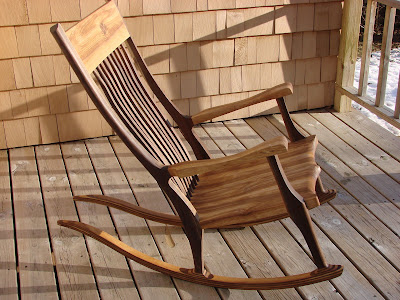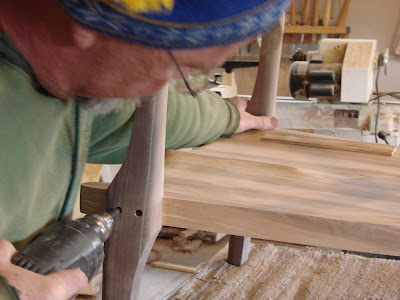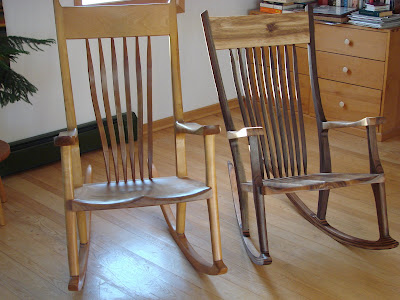
Sunday, April 12, 2009
Tuesday, April 7, 2009
Building a Rocking Chair

Bringing in the new baby from the garage. The chair is now fully
assembled. The hard work is done and the monkey is finallyoff my back.
What remains is shaping the leg/runner joints, sanding and finishing.

Two 4" torque screws + glue. A real sense of relief sets in when
this is accomplished. Maybe I'm paranoid, but drilling the pilot holes
and driving the screws is a bit intimidating. I imagine hearing something
crack and seeing the end of the leg split open. At this point that
leg is already attached to the seat and armrest. What would you do
if something went wrong right here?
Building rocking chairs with turned spindles is so much easier because
all your joints are mortise and tenon, done with a lathe and a drillpress.

Shaping the leg ends so that the runners sit flat is a painstaking job.
This is one of the things that make building these rockers a
love/hate relationship.

Checking for daylight between the leg and the runner.

I used 3" decking screws here.

The back slats are bandsawn. I turned 1/2" tenons on the ends
on my lathe.

My garage rarely has room for a car. The tablesaw is my work
table.

It's always nice to reach the point where you start assembling
the chair using glue, after all innumerable times it has been dry
assembled to see how things fit and look.

The runners are made of 8 strips of wood glued
and clamped in a form. Two runners take nearly
a whole bottle of glue.
Subscribe to:
Comments (Atom)














